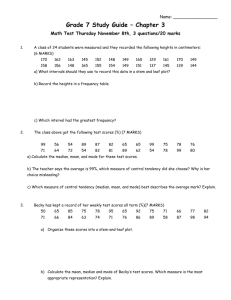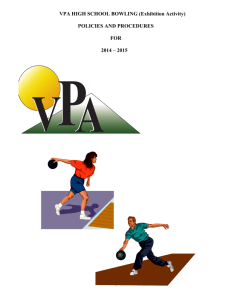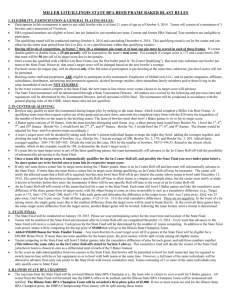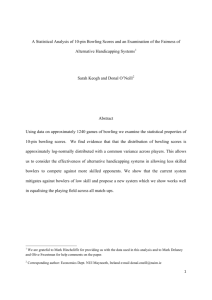The ULTIMATE guidance sheet to statistical coursework
advertisement
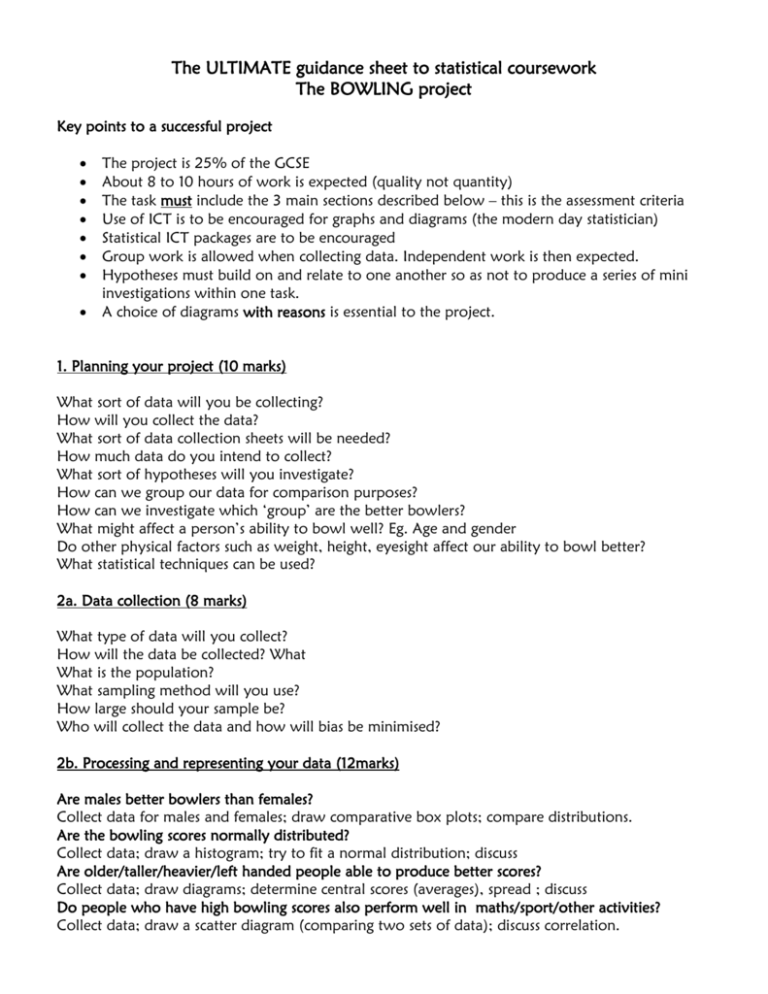
The ULTIMATE guidance sheet to statistical coursework The BOWLING project Key points to a successful project The project is 25% of the GCSE About 8 to 10 hours of work is expected (quality not quantity) The task must include the 3 main sections described below – this is the assessment criteria Use of ICT is to be encouraged for graphs and diagrams (the modern day statistician) Statistical ICT packages are to be encouraged Group work is allowed when collecting data. Independent work is then expected. Hypotheses must build on and relate to one another so as not to produce a series of mini investigations within one task. A choice of diagrams with reasons is essential to the project. 1. Planning your project (10 marks) What sort of data will you be collecting? How will you collect the data? What sort of data collection sheets will be needed? How much data do you intend to collect? What sort of hypotheses will you investigate? How can we group our data for comparison purposes? How can we investigate which ‘group’ are the better bowlers? What might affect a person’s ability to bowl well? Eg. Age and gender Do other physical factors such as weight, height, eyesight affect our ability to bowl better? What statistical techniques can be used? 2a. Data collection (8 marks) What type of data will you collect? How will the data be collected? What What is the population? What sampling method will you use? How large should your sample be? Who will collect the data and how will bias be minimised? 2b. Processing and representing your data (12marks) Are males better bowlers than females? Collect data for males and females; draw comparative box plots; compare distributions. Are the bowling scores normally distributed? Collect data; draw a histogram; try to fit a normal distribution; discuss Are older/taller/heavier/left handed people able to produce better scores? Collect data; draw diagrams; determine central scores (averages), spread ; discuss Do people who have high bowling scores also perform well in maths/sport/other activities? Collect data; draw a scatter diagram (comparing two sets of data); discuss correlation. 3. Interpreting your results (10 marks) Make comparisons between the diagrams and calculations made to decide which group are, for example, the better bowlers. Draw on other findings and variables introduced to the project. Reflect continuously on your plan and choices made for each diagram. Discuss. Confirm or refute original hypotheses by using summary statistics. Comment on all techniques used. Evaluate sampling or overall strategy. Grade C & B techniques could involve: Scatter diagrams Cumulative frequencies Box plots Averages Comparisons A & A* students will be expected to discuss more complex techniques such as: Spearman’s rank Standard deviation Histograms Normal distribution Total marks 40 (this is 25% of your statistics GCSE)




